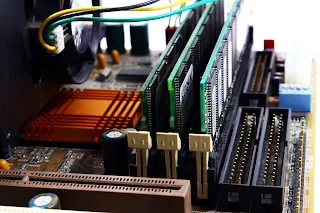What is SuperComputer
supercomputer
A supercomputer is a type of computer that is designed to process extremely large amounts of data or perform complex computations at very high speeds. They are the most powerful computers available and are typically used for advanced scientific research, complex simulations, and other data-intensive applications.
Supercomputers are typically composed of thousands of processors that work together in parallel to perform computations. They also have large amounts of memory and high-speed storage, allowing them to process large data sets quickly.
The architecture of a supercomputer can vary depending on its intended use, but most supercomputers use a cluster or grid architecture, where multiple smaller computers or nodes work together as a single system. They are also often equipped with specialized hardware such as GPUs (graphics processing units) or FPGAs (field-programmable gate arrays) that are optimized for specific types of calculations.
Supercomputers are incredibly expensive to build and maintain, and are usually only found in specialized facilities such as research centers, government agencies, or large corporations. However, they play a critical role in advancing scientific research, and have been used for applications such as weather forecasting, protein folding simulations, and nuclear weapons research.
Supercomputers are high-performance computing systems designed to process massive amounts of data and perform complex computations.They are used in a variety of fields, including scientific research, weather forecasting, aerospace engineering, and financial modeling,among others. Here are some of the key components of a supercomputer:
Central Processing Unit (CPU):
The CPU is the "brain" of the supercomputer, responsible for executing instructions and performing calculations. Supercomputers often have multiple CPUs or processor cores to handle parallel processing tasks.
Memory:
Supercomputers have large amounts of memory to store and access data quickly. They use high-speed random access memory (RAM) and other types of specialized memory, such as cache memory, to speed up data access.
Storage:
Supercomputers require high-capacity storage systems to store large amounts of data. They use a combination of different types of storage, including hard disk drives (HDDs), solid-state drives (SSDs), and tape drives. Network interconnects: Supercomputers often consist of multiple nodes, each with its own CPU, memory, and storage. These nodes need to communicate with each other quickly and efficiently, so supercomputers typically use high-speed network interconnects, such as InfiniBand or Ethernet.
Cooling:
Supercomputers generate a lot of heat, so they require sophisticated cooling systems to prevent overheating. This can involve a combination of air and liquid cooling, as well as heat sinks and fans.
Operating system and software:
Supercomputers typically run a specialized operating system and software designed to maximize their performance and efficiency. These systems may include specialized compilers, libraries, and parallel programming models.
Overall, the components of a supercomputer are designed to work together to deliver high-performance computing capabilities that can tackle the most complex and demanding computational challenges.





